
We gardeners love the beautiful, the fantastic, and the unusual. For most of us, this includes cats.
As gardeners, balancing our love of plants, the wildlife we encourage, and our amusing feline friends is sometimes challenging.
Quirky, Peppy, and Unpredictable.
From adorable, pampered companions to rogue neighborhood bullies, there are all sorts of cats.
In the urban setting, well-loved cats are revered as domestic pets best kept safe and indoors.
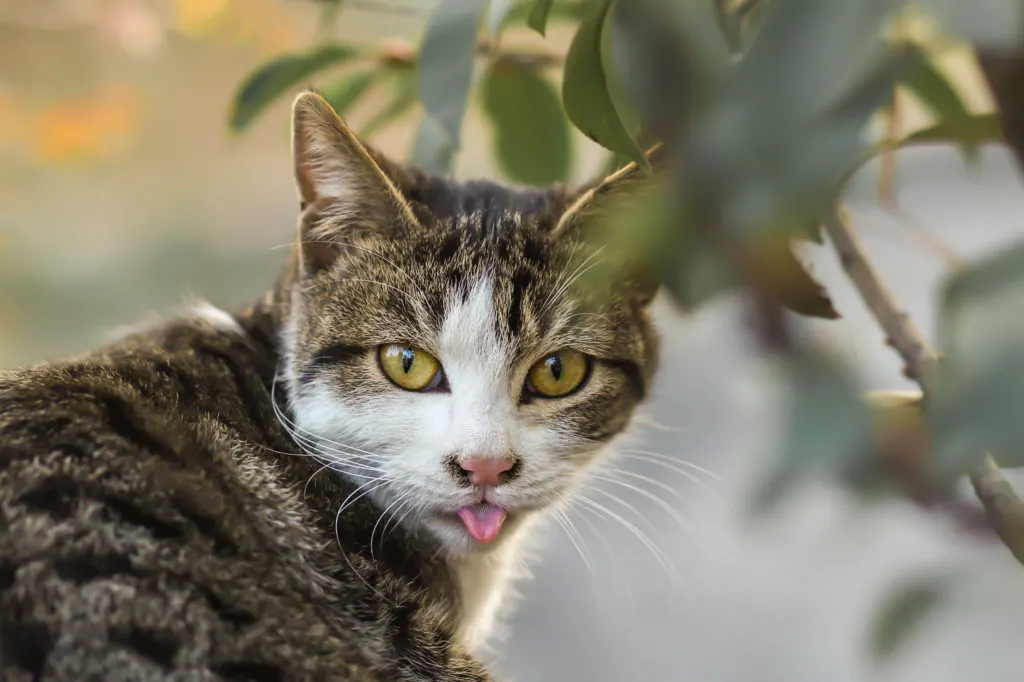
Out in the country, cats are important hunters that keep small rodent populations in check.
In both urban and country areas, domestic cats do cause a challenge for wildlife, songbirds especially.
Hard Working or Destructive and Damaging?
Cats rule the roost and will nap wherever they like. They crush favorite plants or dig and trod anywhere they want.
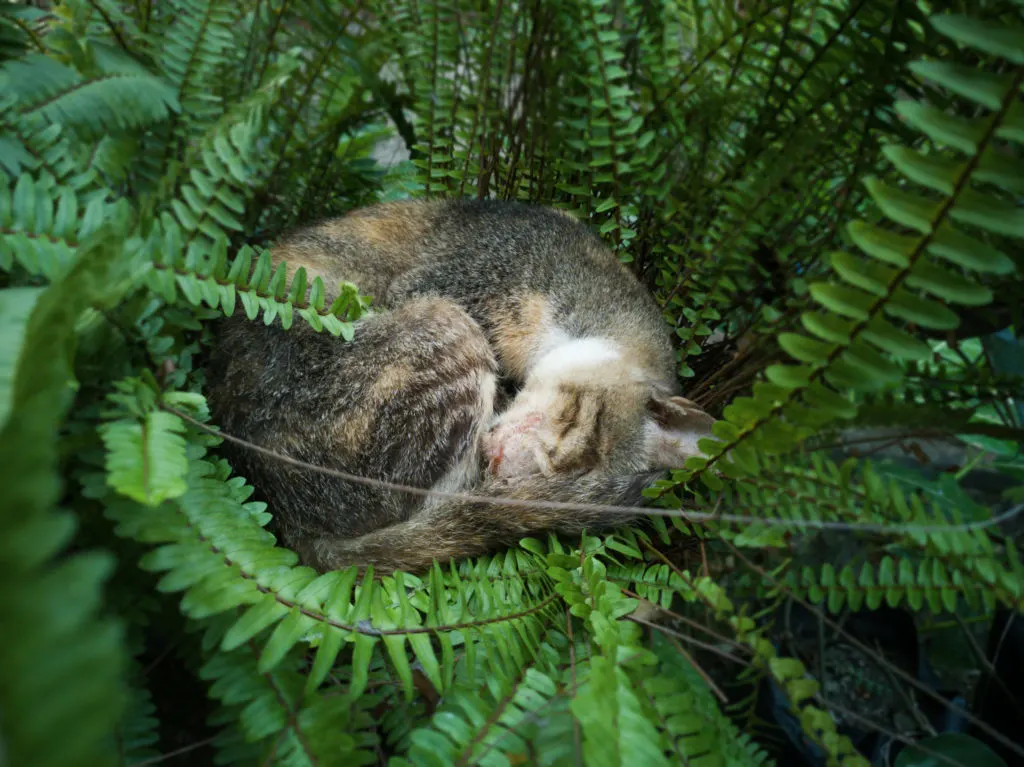
They leave their messes in their wake. Which is harmful to plants, soil health, and no fun for the gardener either.
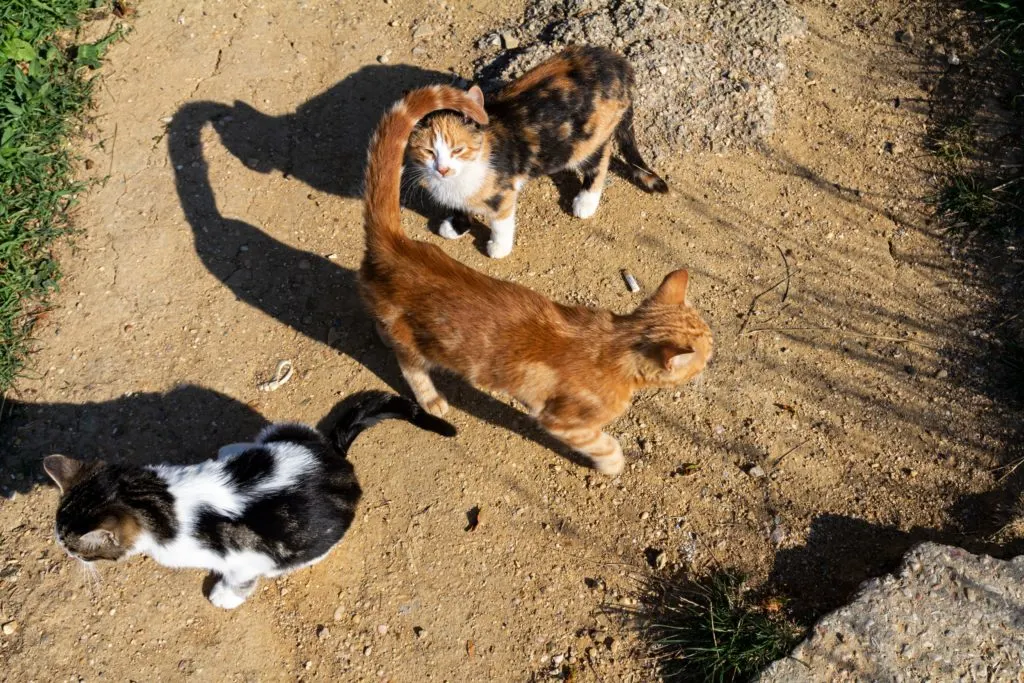
In the pro column, cats do help to deter and reduce small rodent populations. Notably, mice, voles, moles, and rats. These, too, are harmful to flower gardens, veggie crops, and can harbor diseases unwelcomed by humans.
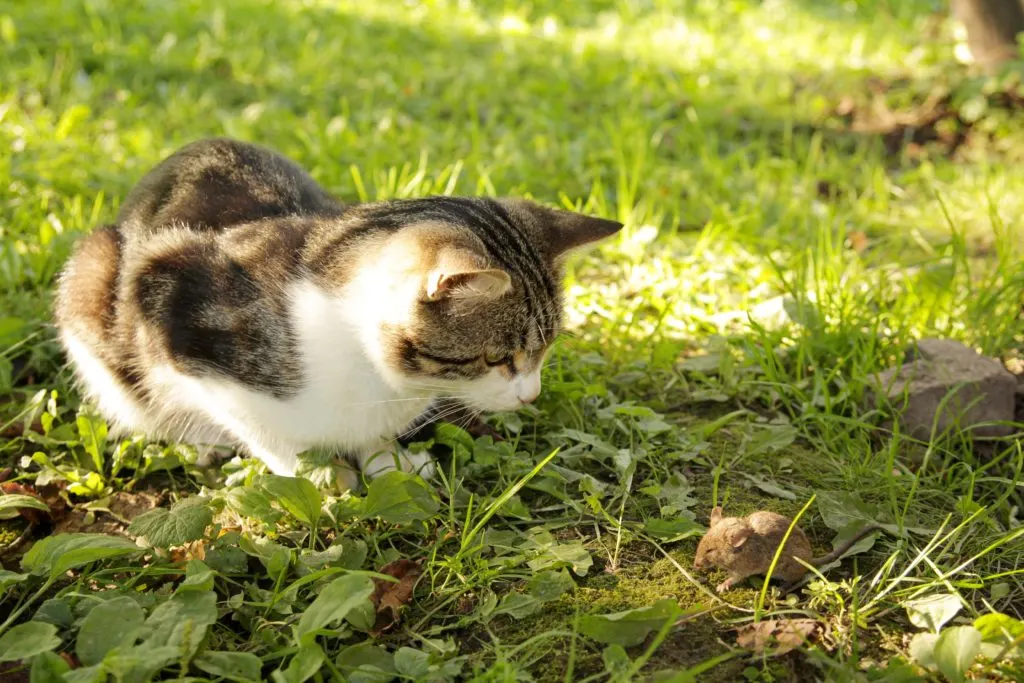
However, domestic cats do pose a significant threat to wildlife, importantly, songbirds.
Striking the Balance
Of course, we want to be as friendly as possible to cats. Especially, when it’s your own fuzzy besty you want to keep out of the flower bed!
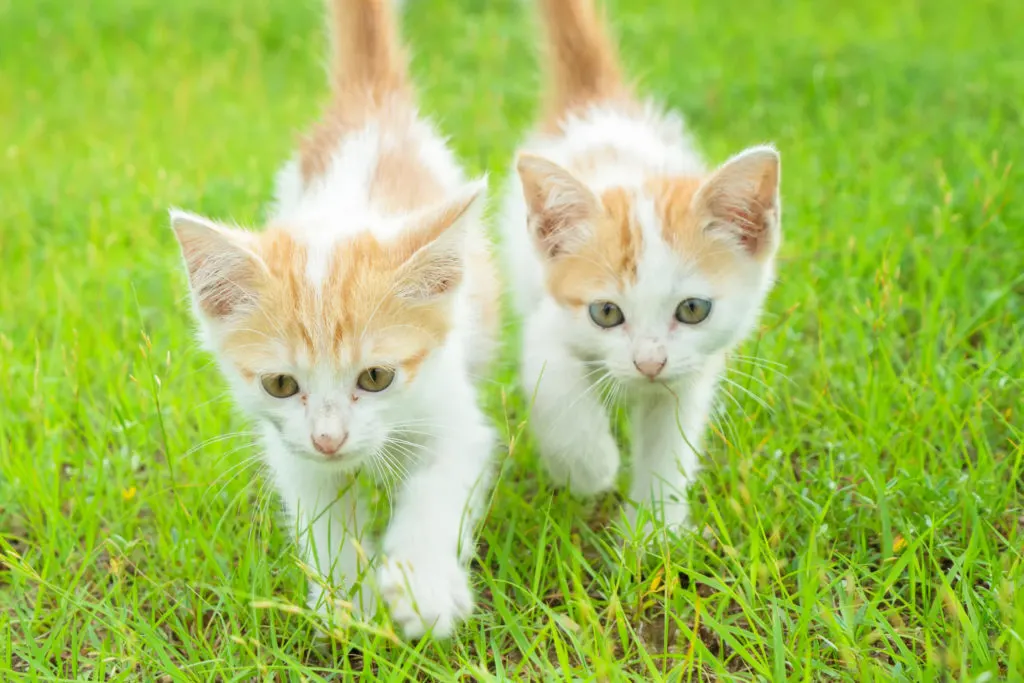
Those neighborhood villains, tomcats, strays, and feral felines need our kindness too!
The challenge, therefore, is to keep our beloved furry felines safe, make other cats unwelcome, all while protecting wildlife.
Here are some strategies to accomplish these goals, for the sake of our beautiful, bountiful, blooming backyards!
4 Friendly Ways to Keep Cats Out of Flower & Vegetable Beds
1. Make a Cat Less Comfortable.
Cats seem to lie down on just about anything. And walk just about anywhere. Well, maybe not.
Sharp stone mulches. Prickly leaves. Spikey pinecones. Barbed, bristly branches. Try creating surfaces throughout the garden that cats won’t want to tread on or sprawl over.
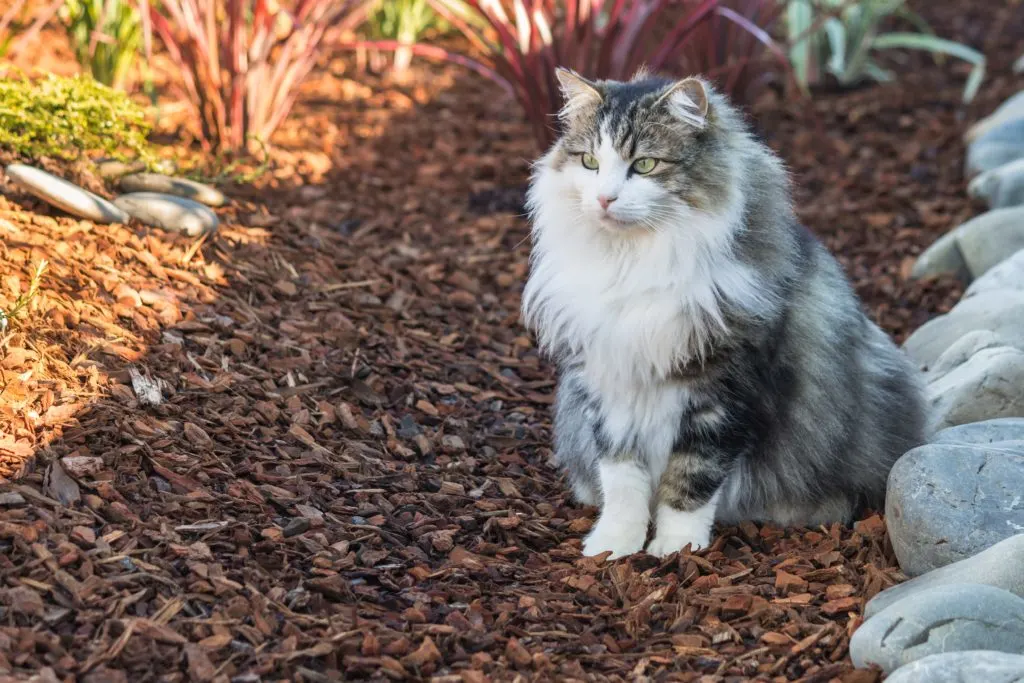
Sound emitting deterrents and motion sensor sprinklers will have cats waving the white flag in retreat.
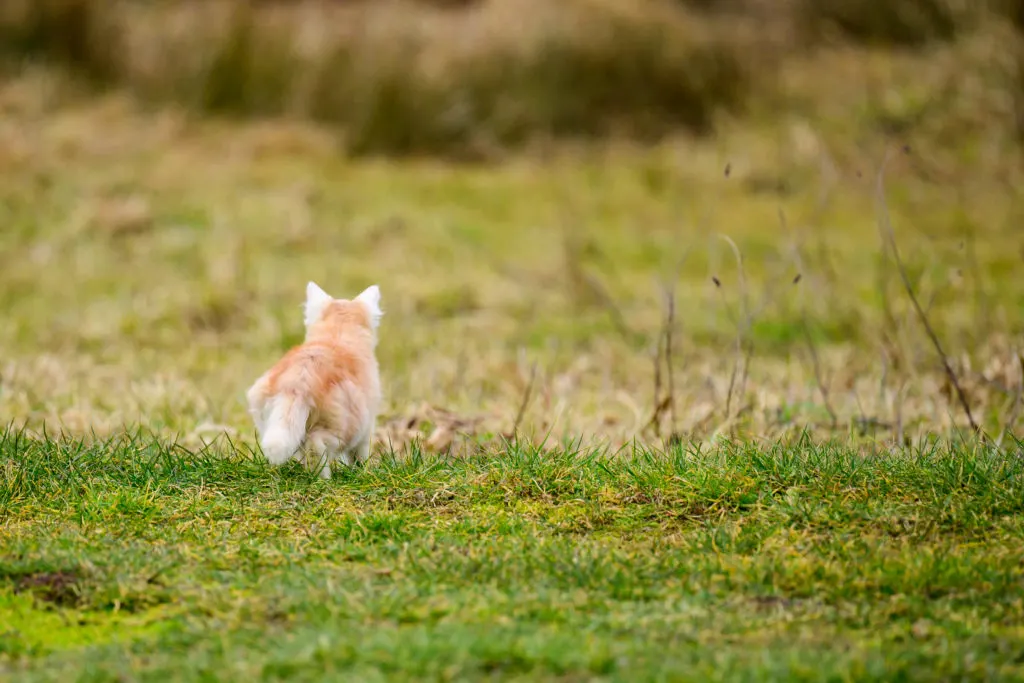
Cats can’t stand certain smells. Lemon peels, cinnamon, or old coffee grounds can be sprinkled around areas to protect them from cats.
Cayenne pepper and black pepper are also unhospitable smells for cats but be gentle as too much might harm sensitive noses, mouths, and airways.
2. Grow Plants Cats Hate
Strong smelling plants can either be loved or hated by cats.
Notably, Rue, Lavender, Artemisia, Rosemary, Geranium, and Marigold are apparently hated by cats.
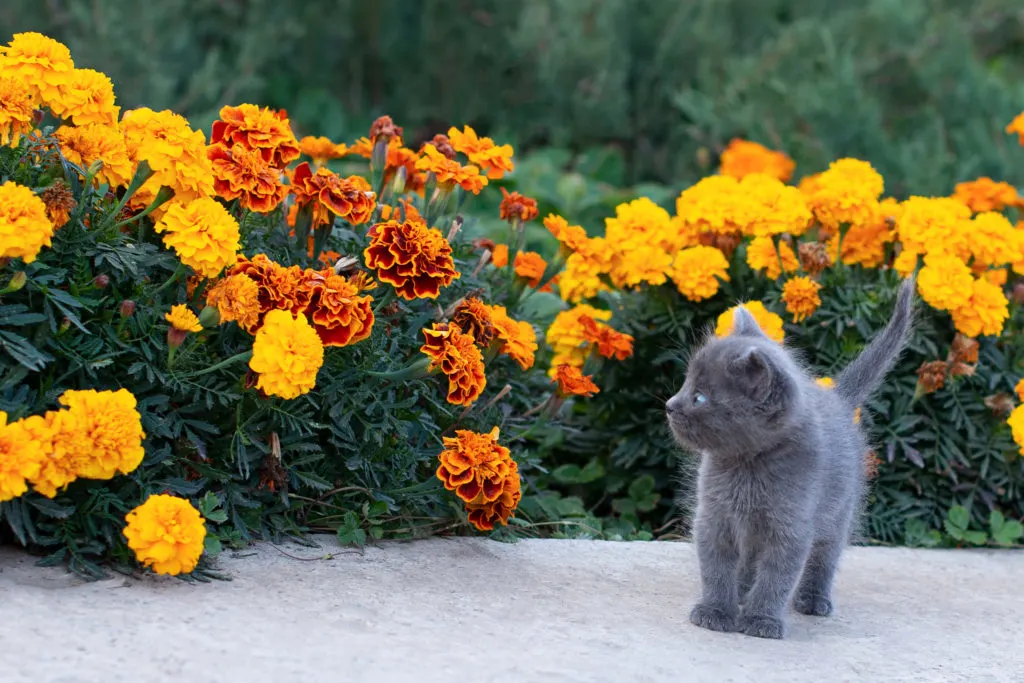
I have had excellent success in keeping my own cats out of the flower beds by growing Lemon Gem Marigolds, Tagetes tenuifolia, in borders with other bloomers. They have a delicious light lemony fragrance, not loved by cats!
It is true, cats are weirdos. Your cat might love or hate some plants more than others!
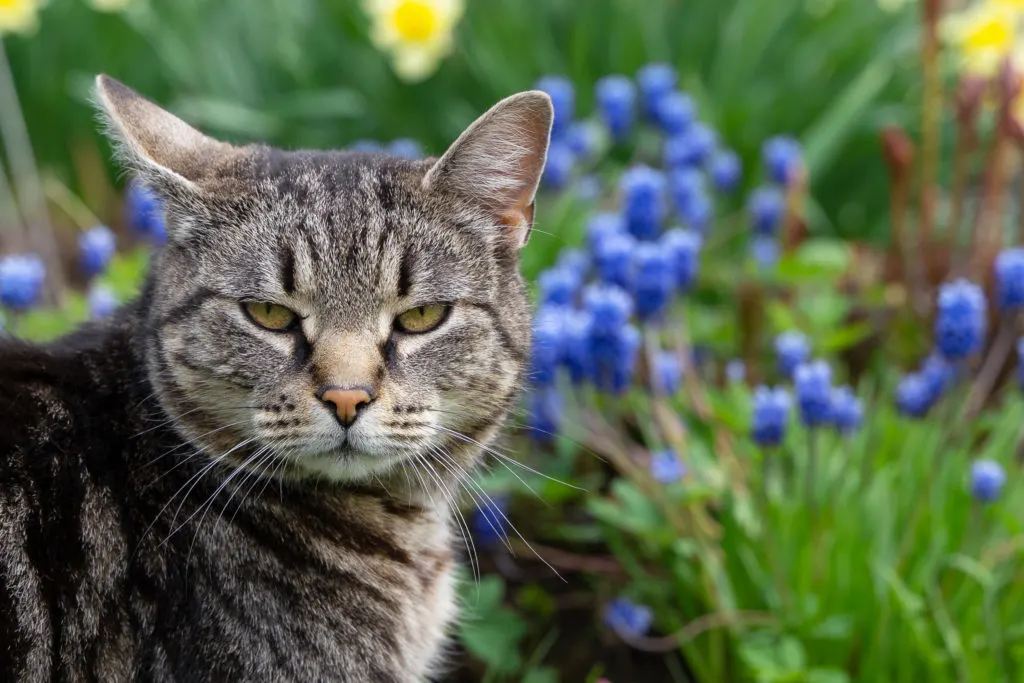
Avoid using plants cats, in general, love. Plants thought to be loved by many cats are, of course, Cat Mint or Catnip (Nepeta sp.), Jacob’s ladder, Valerian, and Flax.
3. Create a Cat Sanctuary
Hey! Look Over Here! Perfect Cat Distractors!
Make areas that are cat-friendly and far away from your precious blossoms.
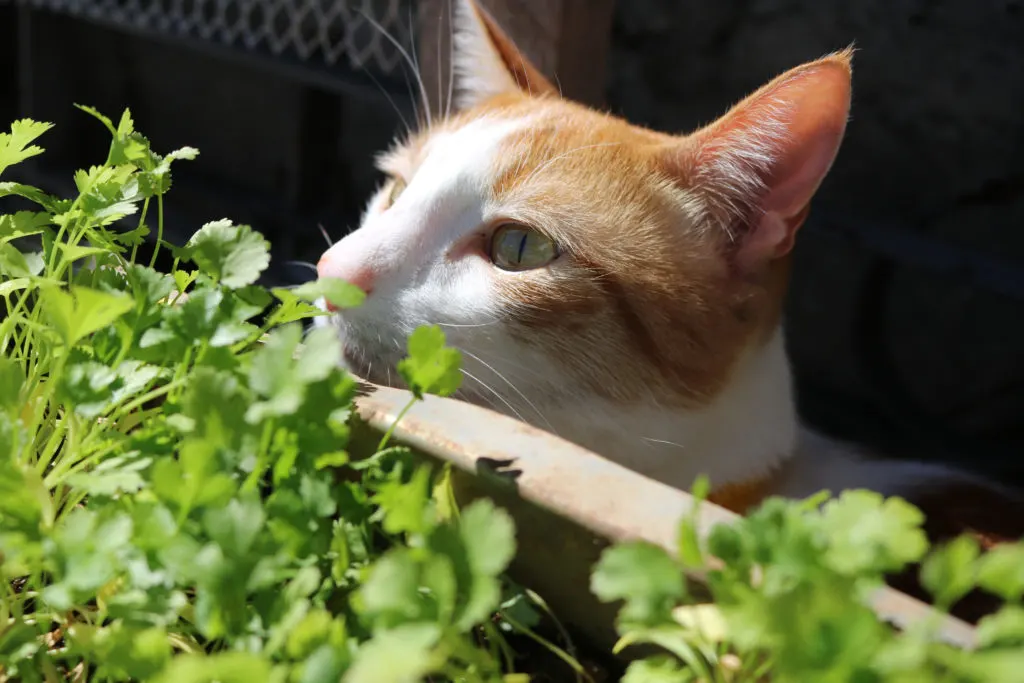
Use plants cats love like Catnip and Valerian.
Create smooth, comfy surfaces that cats might enjoy.
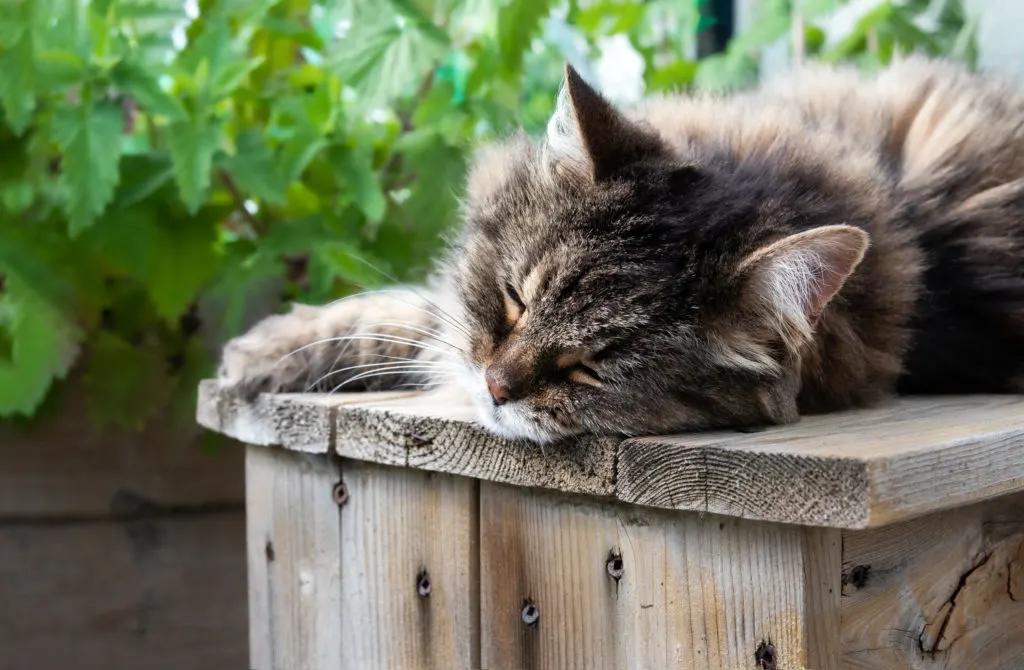
Sunny spots to warm up in, and shady spots to laze away the afternoon. Oh, to be a cat!
4. Build an Outdoor Cat Enclosure
In urban areas, many vets recommend keeping cats indoors for their safety and comfort.
In great weather, those cats might be restless to get outside. For them, you might consider building an outdoor cat enclosure.
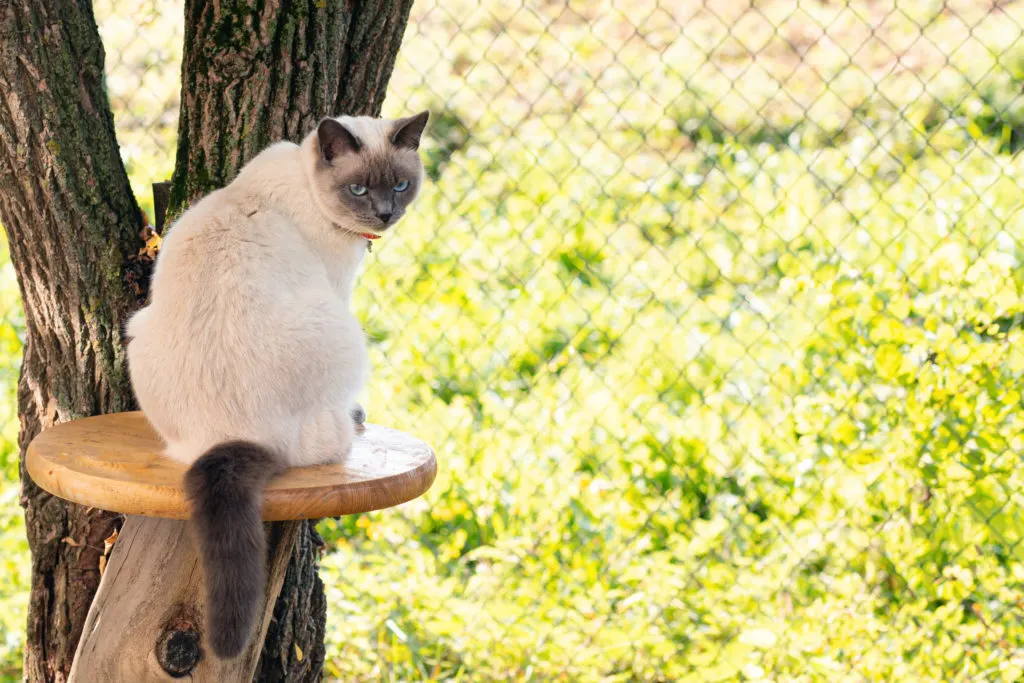
An outdoor cat enclosure protects your blossoming flower beds. In addition, it protects your kitty’s health. Wildlife, including songbirds, are also kept out of reach.
Protecting Wildlife
Birdfeeders, birdbaths, and hummingbird nectar feeders all add beauty and drama to the landscape and our flower beds.
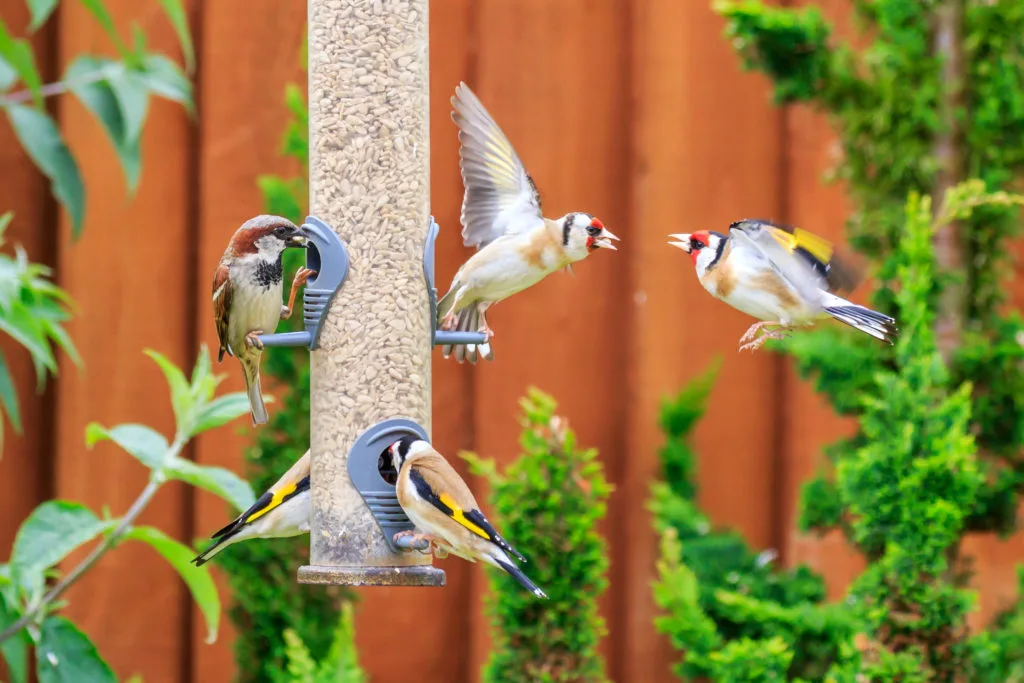
Placement is key as these garden objects can also attract predators, namely our fuzzy feline friends.
House cats and other pets have a few advantages over wildlife.
Wildlife spends 100% of their time outdoors, searching for food and safe habitat.
Migratory birds travel incomprehensible miles during each migration. Weary travelers, migratory birds are at a high risk of predators.
Keeping pet cats generally well-fed, well-rested, pampered, and kept in optimal health, is our goal as pet owners.
For this reason, pets make formidable hunters on wild animals.
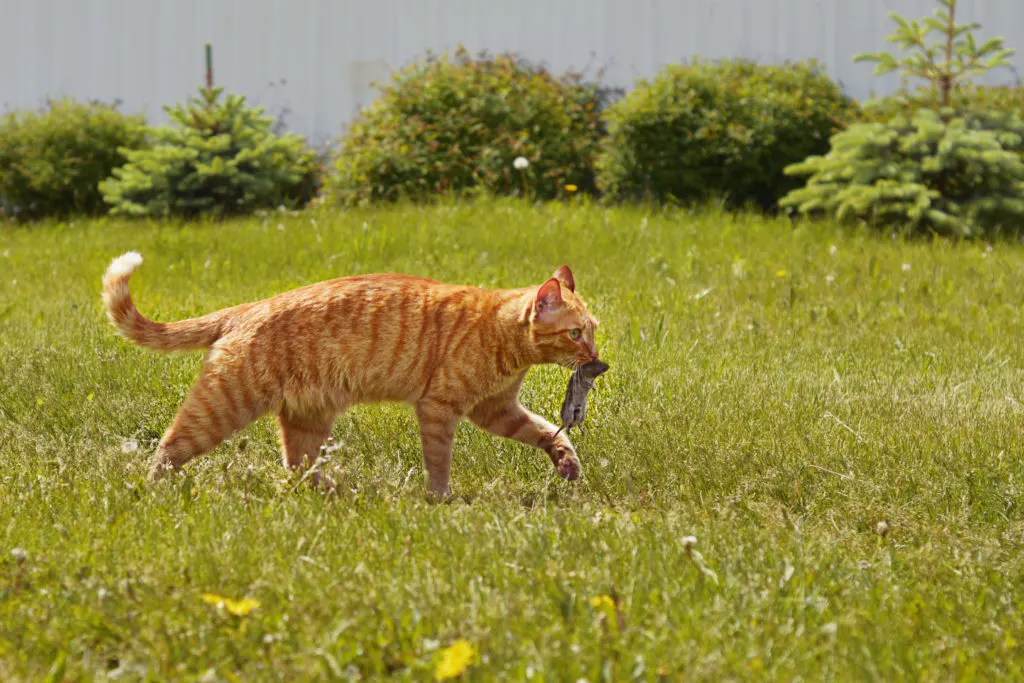
As mentioned, our cats benefit us by working hard to keep rodent pests at bay.
At the same time, it is necessary to protect small birds, songbirds, and migratory birds from our powerful feline hunters.
Gardening for wildlife is a gorgeous and honorable endeavor. To this end, ensure to place birdfeeders, birdbaths, and hummingbird nectar feeders out of reach of cats.
Creative and wily, it may be a challenge to outsmart some predatory cats.
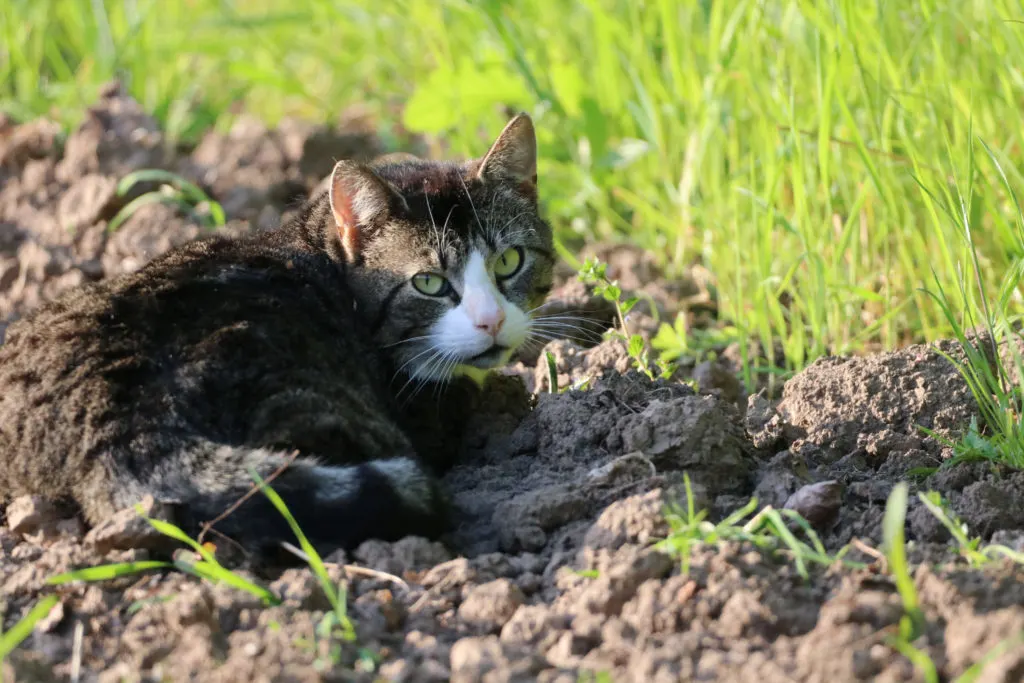
Try to hang feeders from poles and place birdbaths or feeders on top of inaccessible stands.
Bird-friendly landscaping should include cat deterrents like using strong odors, sharp-edged mulches, and areas deemed less comfortable for cats.
Finding friendly ways to keep cats out of flower beds helps protect not only our beautiful blooming backyards but also helps protect wildlife at the same time!
